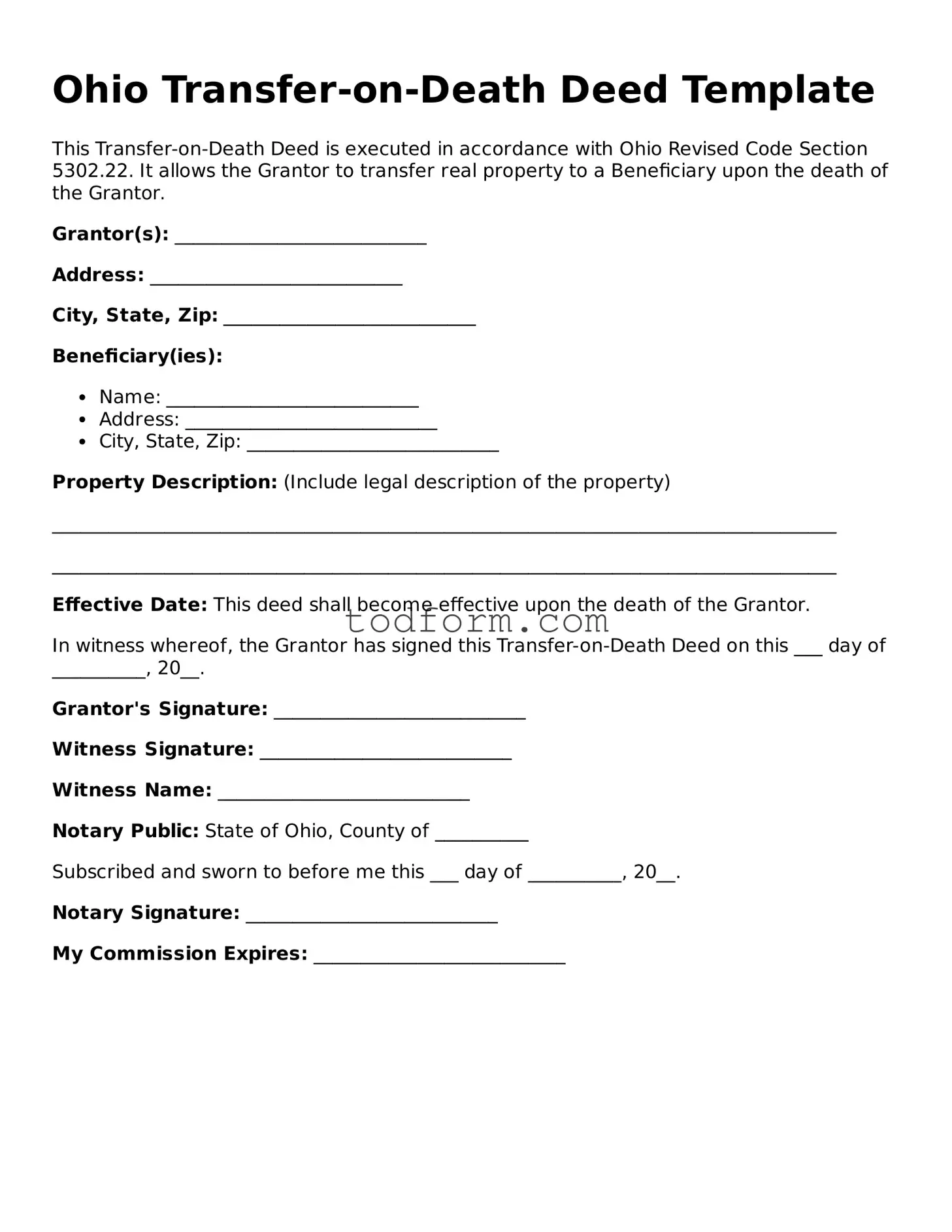Ohio Transfer-on-Death Deed Template
This Transfer-on-Death Deed is executed in accordance with Ohio Revised Code Section 5302.22. It allows the Grantor to transfer real property to a Beneficiary upon the death of the Grantor.
Grantor(s): ___________________________
Address: ___________________________
City, State, Zip: ___________________________
Beneficiary(ies):
- Name: ___________________________
- Address: ___________________________
- City, State, Zip: ___________________________
Property Description: (Include legal description of the property)
____________________________________________________________________________________
____________________________________________________________________________________
Effective Date: This deed shall become effective upon the death of the Grantor.
In witness whereof, the Grantor has signed this Transfer-on-Death Deed on this ___ day of __________, 20__.
Grantor's Signature: ___________________________
Witness Signature: ___________________________
Witness Name: ___________________________
Notary Public: State of Ohio, County of __________
Subscribed and sworn to before me this ___ day of __________, 20__.
Notary Signature: ___________________________
My Commission Expires: ___________________________
